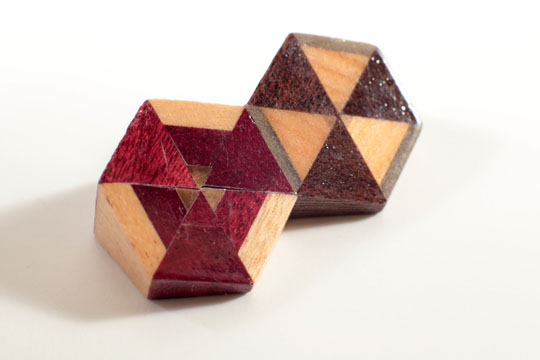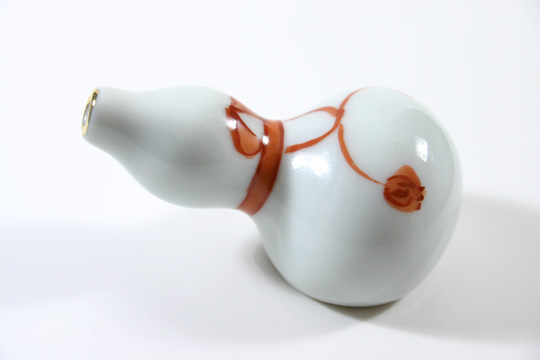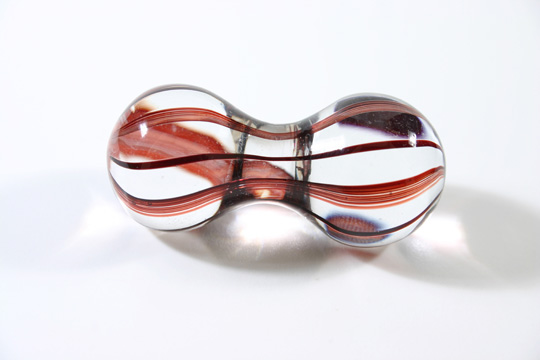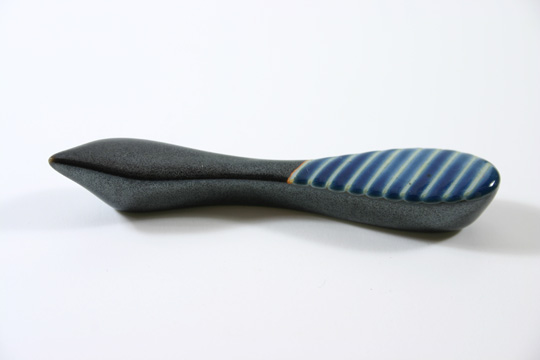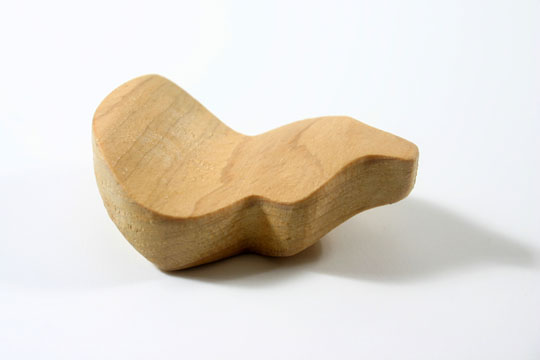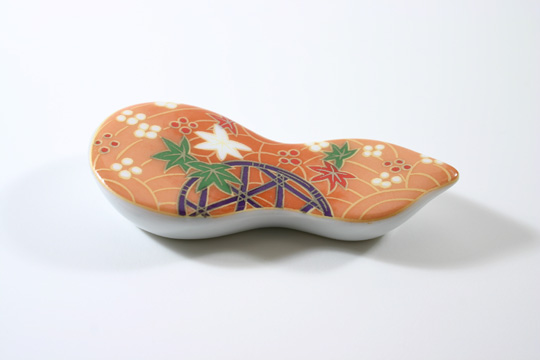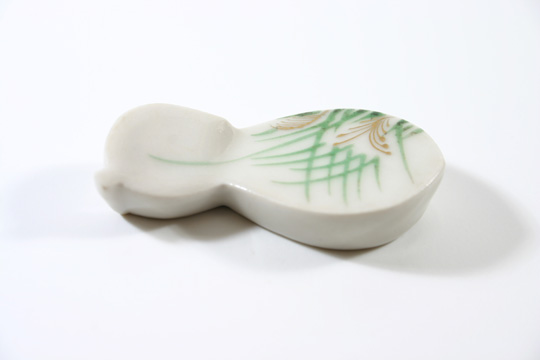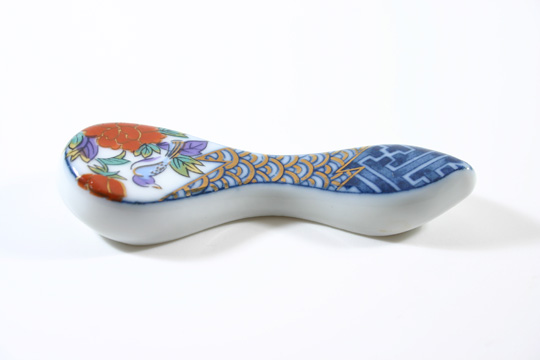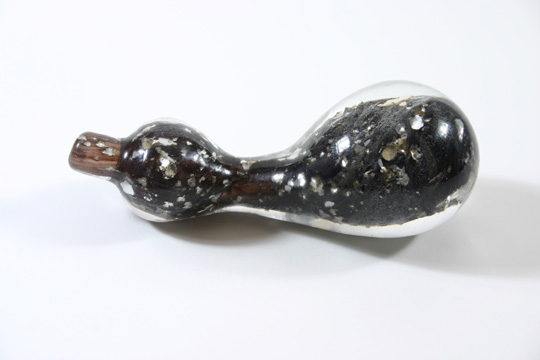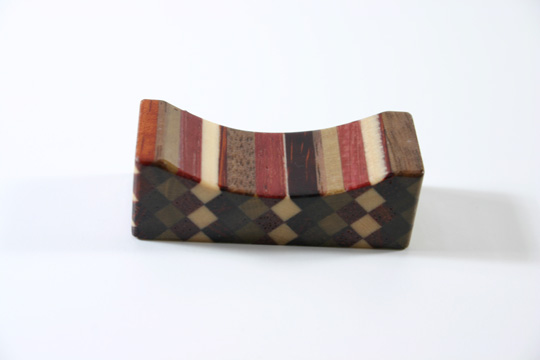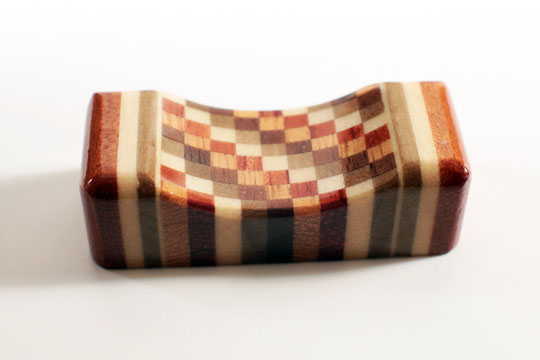
Hyotan shape, with marquetry middle part
Origin : Japan
Made of : wood
Classification : things / shapes
Maker : ?



About "hyotan" (hyotan - 瓢箪, 瓢簞) :
Member of the cucurbits family, the Hyotan was introduced to Japan during the early Jomon period and has been part of Japanese life for over ten thousand years. Although sometimes grown for food, it has mainly been cultivated to make vessels or gourds.

Gourds made from a hyoutan sold in a shop
About "Marquetry japanese" (yosegi-zaiku - 寄木細工) :
Yosegi-zaiku is a Japanese technique of parquetry which dates from the Edo period. Yosegi-zaiku parquetry is made differently than Western parquetry. Sticks of woods of different colours are glued together to form a block which section is then cut in very thin slices forming a design. Yosegi-zaiku parquetry is a speciality of Hakone region.
One of the most famous item decorated with this technique is a puzzle box ('himitsu-bako') which can only be opened by using a certain number of secret movements.

A 'himitsu-bako' puzzle box with yosegi-zaiku parquetry
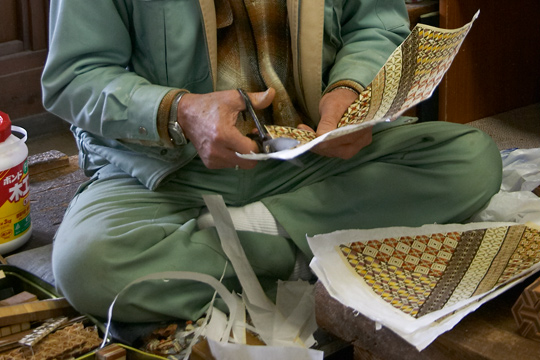
The 'himitsu-bako' technique uses thin layers cut from a block of glued sticks of different colour woods
External links :
http://en.wikipedia.org/wiki/Yosegi
http://ginkgraph.net/articles/products/hakone-yosegi-zaiku.html

